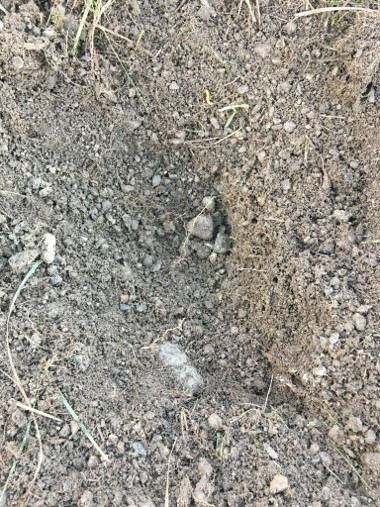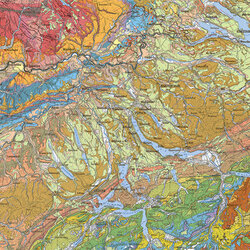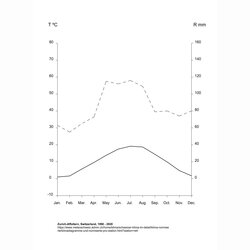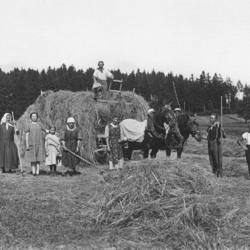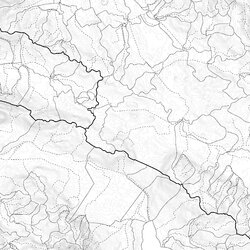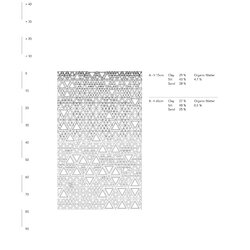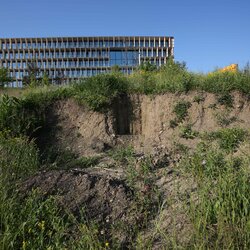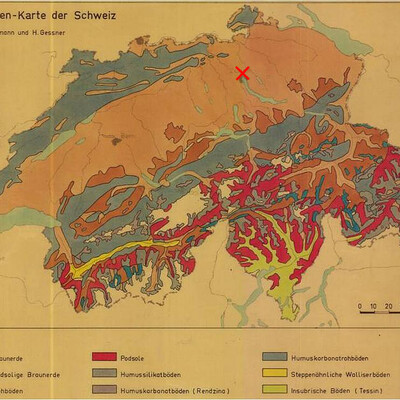
Soil
Due to the geological and climatic conditions of the Swiss Plateau, Zurich is originally located in a region with brown earth soils. Brown earth is typically characterized by the different soil horizons 0, A, B, C with deep soil and medium-heavy (sandy-loamy) topsoil. It is a soil that is fertile and well-suited for agriculture.
As a first approach to find out more about the soils in our garden, we took a look at the GIS browser of the canton of Zürich. While there is no data on our specific plot, we were able to find data on a meadow 300 meters away. The soil there has similar characteristics to the brown earth typology described above: it is a deep (70 - 100 cm), gravelly (10 - 20%) and sandy loam to loamy silt soil. The dark brown color indicates fertile, agriculturally used soils - which was true for the land of our garden for centuries until the ETH bought the land and started building the campus.
However, the soils in the Garden of the XXI Century in Zurich are far from being undisturbed. They are not only a product of natural processes, but also of decades of human intervention in and around the site, which was accelerated in the 1960s by the construction activities of the ETH. As a result, the soil exhibits clear characteristics of an urban typology. For example, the soil shows very heterogeneous conditions within only a few meters, ranging from loose to compacted and from moist to dry. We only got to know these different soil types after we had been on site for a year, taking soil samples and closely observing the vegetation. Based on these learnings (see history), we have created a soil map showing the different conditions on site.
A special feature of the site is a part of the ground that is very compacted and shallow. During the construction of the building next to the garden, an access road ran through the entire site. After the construction work, the remains of the road and some piles of rubble were apparently left there and simply covered with a thin layer of topsoil instead of being removed completely.
Another special feature is a damp, almost waterlogged area. According to the ETH facility manager, water seeps out of the subsoil of the slope - more during wet periods, but also when it is not raining. The reason for this is presumably the sealed surface and the underground buildings on the campus. The rainwater cannot run off naturally and somehow ends up in our garden. As a result, part of the garden is always slightly damp, which you can easily see and hear when you go for a walk - even in summer. The damp area is in the upper part of the garden with distinctive moisture-indicating plants such as Juncus effusus (see images).
All in all, we also see the Zurich garden as a laboratory for experimenting with such diverse, heterogeneous and urban soil conditions. What can we learn from the soils in our garden that could be relevant for other urban soils?







